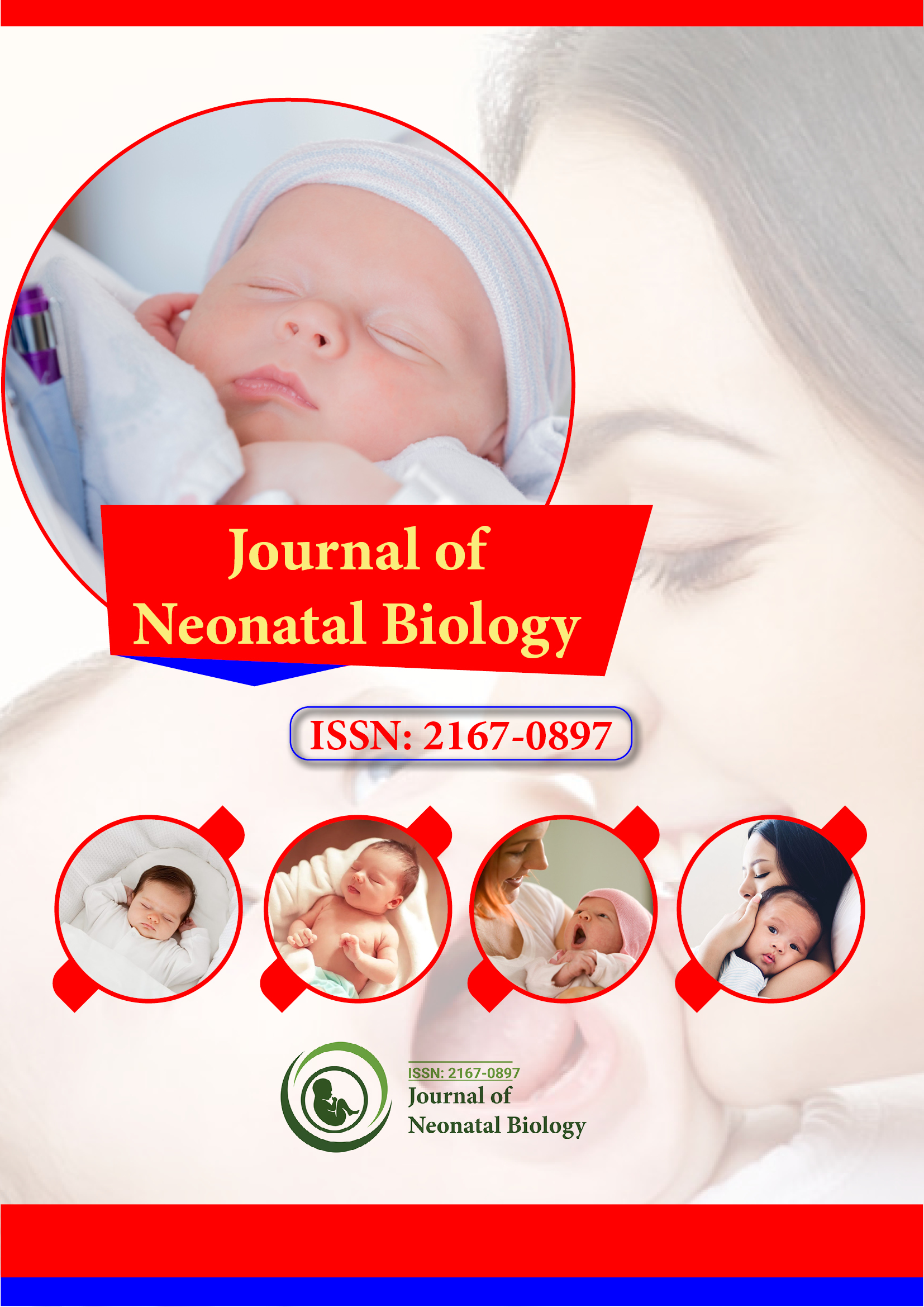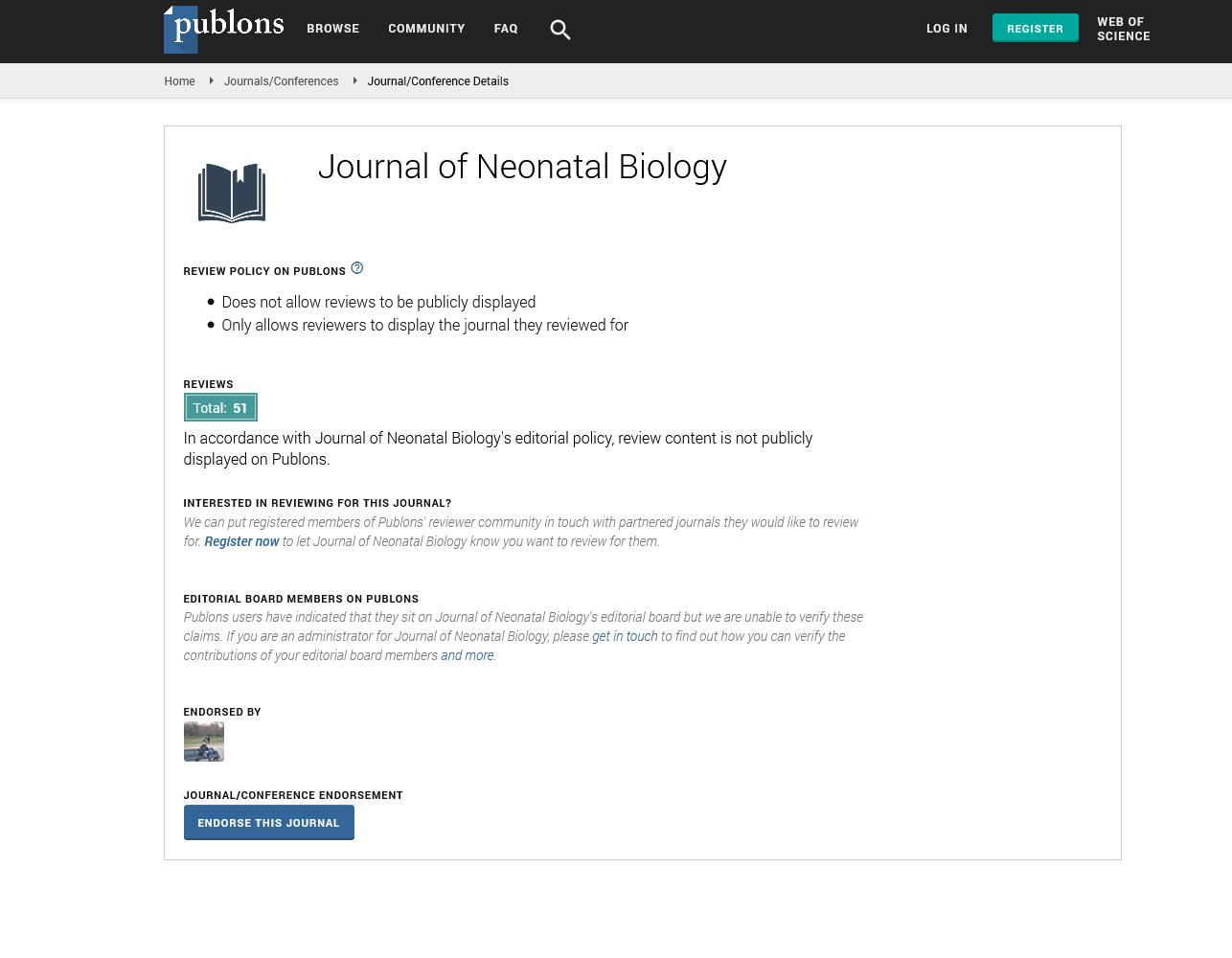PMC/PubMed Indexed Articles
Indexed In
- Genamics JournalSeek
- RefSeek
- Hamdard University
- EBSCO A-Z
- OCLC- WorldCat
- Publons
- Geneva Foundation for Medical Education and Research
- Euro Pub
- Google Scholar
Useful Links
Share This Page
Journal Flyer

Open Access Journals
- Agri and Aquaculture
- Biochemistry
- Bioinformatics & Systems Biology
- Business & Management
- Chemistry
- Clinical Sciences
- Engineering
- Food & Nutrition
- General Science
- Genetics & Molecular Biology
- Immunology & Microbiology
- Medical Sciences
- Neuroscience & Psychology
- Nursing & Health Care
- Pharmaceutical Sciences
Perspective - (2022) Volume 11, Issue 6
Mechanisms and Management of Neonatal Seizures
Robert Stanley*Received: 01-Jun-2022, Manuscript No. JNB-22-17442; Editor assigned: 06-Jun-2022, Pre QC No. JNB-22-17442(PQ); Reviewed: 22-Jun-2022, QC No. JNB-22-17442; Revised: 27-Jun-2022, Manuscript No. JNB-22-17442(R); Published: 04-Jul-2022, DOI: 10.35248/2167-0897.22.11.351
Description
Sudden, atypical, and excessive electrical activity in the brain is what causes seizures. Neonatal seizures are defined as those that happen during the neonatal period, or for a full-term baby, the first 28 days of life. The majority of these things happen during a baby's first one to two days or first week of life. Neonate seizures are more likely to occur in babies who are premature or underweight at birth. Neonatal seizures can have a variety of effects depending on their form and underlying causes. Some neonatal seizures are minor and transient, so they don't have an adverse effect on long-term health. However, persistent seizures that go untreated can result in lifelong harm from reduced brain oxygenation and increased brain cell activity. Neonatal convulsions are frequently signs of a more severe underlying illness, including brain damage. This calls for prompt, specialist care for infants having new-born seizures.
Because they can appear as chewing or cycling movements, newborn seizures can be challenging to identify from regular neonatal activity. Primitive subcortical seizures, migrating clonic jerks of the extremities, and alternating hemiplegia are common symptoms (which cause respiratory arrest, chewing movements, persistent eye deviations or nystagmoid movements, and episodic changes in muscle tone). It is rare to have generalized tonicclonic seizures. Particularly following initial antiseizure drug therapy, which is more likely to cease clinical symptoms than electrical epileptic activity, clinically silent electrical seizure activity is frequently present after a hypoxic-ischemic insult and in infants with CNS infections.
There are numerous reasons for neonatal seizures. A difficult or protracted labour, constriction of the umbilical cord, or lack of oxygen before or during birth as a result of placental abruption (premature removal of the placenta from the uterus) Infections contracted either before or after birth, such as rubella, toxoplasmosis, syphilis, or bacterial meningitis, before or after birth, stroke, a cerebral blood clot, bleeding inside the head, birth malformations in the brain Neonatal Seizure Disorders Diagnosis
Laboratory tests (such as serum glucose, electrolytes, CSF analyses, urine and blood cultures, and occasionally genetic testing), Electroencephalography (EEG), and commonly used cranial imaging it are important to distinguish between jitteriness and actual seizure activity (alternating contraction and relaxation of opposing muscles in the extremities). While seizures happen spontaneously and motor activity is sensed even when the affected extremity is held steady, jitteriness is typically stimulus-induced and can be halted by holding the extremity still.
Clinical seizures can be classified into four different categories are subtle, clonic, tonic, and myoclonic. Each of them has three different types: focal; multifocal (involving many sites; asynchronous; and frequently migratory); and generalized (diffusely bilateral, synchronous, and non-migratory).
There are two principles the initial step is to identify and address the seizure's underlying cause, paying close attention to any concomitant acute metabolic changes such as hypoglycemia. The assessment of the need to control seizures is the second principle, and it entails weighing the advantages of stopping some or all seizures against any possible negative side effects of anticonvulsant medicine.
However, the severity of the underlying illness may explain both poor seizure control and unfavorable outcomes. Prolonged or poorly managed newborn seizures have been linked to worse outcomes than occasional or easily controlled seizures. When the underlying neurological condition is taken into account, there is no clinical data that indicates anticonvulsant therapy affects neurodevelopmental outcomes.
Citation: Stanley R (2022) Mechanisms and Management of Neonatal Seizures. J Neonatal Biol. 11:351.
Copyright: © 2022 Stanley R. This is an open-access article distributed under the terms of the Creative Commons Attribution License, which permits unrestricted use, distribution, and reproduction in any medium, provided the original author and source are credited.

